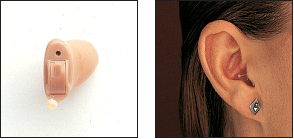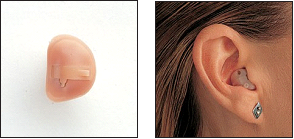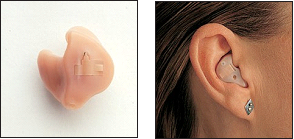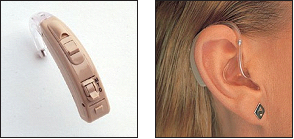The following is an excerpt from the FDA Consumer Health Information fact sheet by the same name.
The Food and Drug Administration (FDA) has launched a new Web site that will benefit current and potential users of hearing aids.
FDA regulates hearing aids, which it defines as sound-amplifying devices designed to aid people who have impaired hearing.
“People who already use a hearing aid know that selecting the right one is not a simple process,” says Eric Mann, M.D., Ph.D., deputy director of FDA’s Division of Ophthalmic, Neurological, and Ear, Nose, and Throat Devices. “There are many issues to consider. Also, current users of hearing aids want to know about the latest types and technology, and how to properly maintain the ones they already have.”
While more than 35 million Americans have some degree of hearing loss, a 2004 survey conducted by the National Hearing Institute found that slightly more than 11 million hearing instruments were being used nationwide.
An Array of Topics
Mann says the new Web site will cover the different types and styles of hearing aids, how to obtain one, and steps to remember and consider before purchasing a hearing aid.
It has information on hearing aid safety, using cell phones while wearing a hearing aid, and on other products and procedures available to people who want to improve their hearing.
It also stresses the difference between hearing aids, which FDA regulates as medical devices in order to assure their safety and effectiveness, and personal sound amplification products, which are not subject to this type of regulation.
Mann says the new Web site is not intended to provide medical advice. “If you have questions about your hearing, the best source of information is your hearing health care professional,” he says.
The site includes sections on
- general information on hearing aids
- types of hearing loss
- types and styles of hearing aids
- how to get a hearing aid
- benefits and safety of hearing aids
- hearing aids and cell phones
- other products and procedures that people can use to improve hearing
From the Checklist
The Web site also has a checklist of steps to consider before purchasing hearing aids. Items on this checklist include:
- Get a check up. Go to a doctor— preferably an ear, nose, and throat physician—to get a medical exam. This exam will rule out any medical reason for your hearing loss which would require medical or surgical treatment. You will receive documentation of your medical exam and a statement that says you are a candidate for hearing aids.
- Consider going to an audiologist. Audiologists can perform an exam to determine the type and amount of your hearing loss.
- Buy your hearing aid from a licensed hearing health care professional. This will typically be an audiologist; a hearing aid dispenser; or an ear, nose, and throat physician.
- Be careful when selecting your hearing aid. Select one that is convenient and easy for you to use. Buy hearing aids with features that meet your needs in daily listening activities.
- Be sure you know how to care for your hearing aid. Ask your hearing health care professional to show you how to clean it and replace the batteries. Ask for a copy of the written instructions.
- Ask about a trial/adjustment period. Most manufacturers provide a period during which your hearing aid can be returned for a refund.
- Check out the warranty. Like any other product you purchase, be aware of what parts or services are covered.
You can visit the Web site at www.fda.gov/MedicalDevices/ProductsandMedicalProcedures/HomeHealthandConsumer/ConsumerProducts/HearingAids.
For More Information
Hearing Aids and Personal Sound Amplifiers: Know the Difference

Fits Completely in the Canal
This smallest of all hearing instruments is designed to hide completely in the ear canal.

In-the-Canal, Half-Shell
Small and discreet this type is easy to handle and may include additional control functions

In-the-Ear
This type features the widest selection of user-controlled functions and comfort features.

Behind-the-Ear
This type fits snugly behind the ear, and can be connected to external sound sources such as televisions or infrared listening systems.